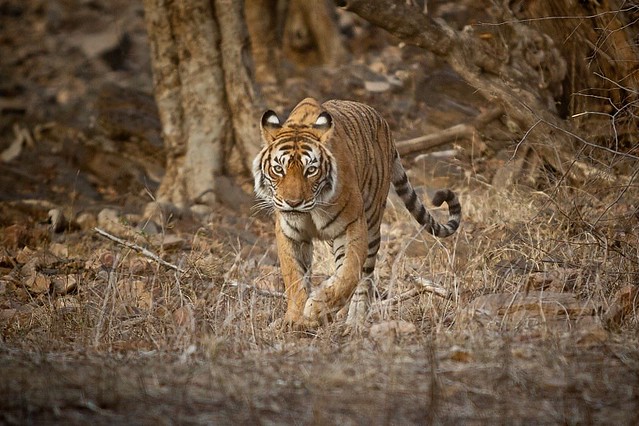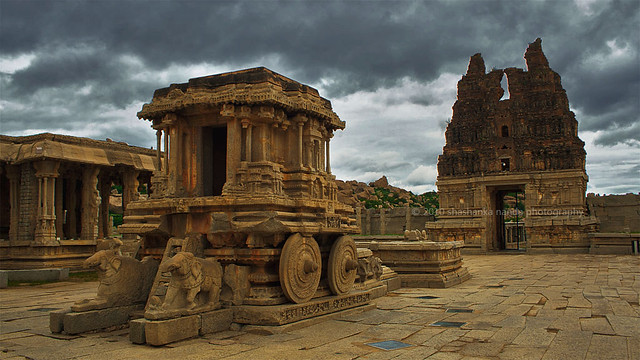It is still dark. Dark enough for most people to be afraid. Especially in this neighbourhood. It is the not the sort of place where a person would want to be sauntering around in the night. For someone kicked out of his home, it is best that I lay low in these unknown parts.
A while later, the breeze picks up. And with it wafts in the smell of fresh food. Smells like sambhar to me. It seems coming from around the corner. Looks like this is going be a good day and a belly full of food. Haven't had much luck of late and the pickings have been lean. Time perhaps to take a risk.
--
It is dawn. And time for a mother to get to work. It is not easy being a single mother. Not the least in this country. Not when you have three hungry mouths to feed. A breeze is blowing. It carries the smell of food. Smells like sambhar to me. Looks like this is going to be a good day. A belly full of food and a bosom full of milk. This meal doesn't come free though. I will have to earn it.
--
Seventy minutes later
--
This sambhar is good. Fresh, warm and full of flavour. Such meals don't come everyday and this one was hard earned. An hour of toil and physical grind. It was worth it - for I need to recover my strength to take care of my babies in this harsh world on my own.
--
There was only one serving. And she got there first. If I want that meal. I will have to fight for it. She isn't going to let go of it so easily. But luck is on my side. I am young and fit. She is tired after her hard labour. Yes, this is my chance.
--
Fifteen minutes later
--
I am licking my wounds. They aren't so bad but what's more important is that I lost to HIM. My own flesh and blood stole my food and didn't hesitate for a second. For all I know he would have killed me. All for some sambhar? This is indeed a cruel world for a single mother. But then, I live to fight another day. That is how it has been for us mothers forever.
--
The sambhar is yummy. Warm, fresh and full of flavour. My nose hurts a little. Mom still packs a punch. But a man has gotta do what he's gotta do. After all, nothing is more important than the next meal. Meals like these are hard to come by. The world is changing - the world is shrinking. There aren't many places I can go. My kind can be shot for pleasure. Or poisoned for stealing a man's property. It is indeed a cruel world out there. But soon I'll be gone for good. Along with all 1500 odd of my kind.
--
July 29th is International Tiger Day. There are less than few thousand of these magnificent creatures left on Earth. And every day we lose more. Losing them does not mean the loss of a circus attraction or the stuff on Animal Planet. Losing them means losing the last of our dwindling forests. The last of this planet's lungs. Tigers and other large predators are important for maintaining balance on this planet. If they go - we will follow them soon into extinction.
Believe it or not. It is true.
A while later, the breeze picks up. And with it wafts in the smell of fresh food. Smells like sambhar to me. It seems coming from around the corner. Looks like this is going be a good day and a belly full of food. Haven't had much luck of late and the pickings have been lean. Time perhaps to take a risk.
--
It is dawn. And time for a mother to get to work. It is not easy being a single mother. Not the least in this country. Not when you have three hungry mouths to feed. A breeze is blowing. It carries the smell of food. Smells like sambhar to me. Looks like this is going to be a good day. A belly full of food and a bosom full of milk. This meal doesn't come free though. I will have to earn it.
--
Seventy minutes later
--
This sambhar is good. Fresh, warm and full of flavour. Such meals don't come everyday and this one was hard earned. An hour of toil and physical grind. It was worth it - for I need to recover my strength to take care of my babies in this harsh world on my own.
--
There was only one serving. And she got there first. If I want that meal. I will have to fight for it. She isn't going to let go of it so easily. But luck is on my side. I am young and fit. She is tired after her hard labour. Yes, this is my chance.
--
Fifteen minutes later
--
I am licking my wounds. They aren't so bad but what's more important is that I lost to HIM. My own flesh and blood stole my food and didn't hesitate for a second. For all I know he would have killed me. All for some sambhar? This is indeed a cruel world for a single mother. But then, I live to fight another day. That is how it has been for us mothers forever.
--
The sambhar is yummy. Warm, fresh and full of flavour. My nose hurts a little. Mom still packs a punch. But a man has gotta do what he's gotta do. After all, nothing is more important than the next meal. Meals like these are hard to come by. The world is changing - the world is shrinking. There aren't many places I can go. My kind can be shot for pleasure. Or poisoned for stealing a man's property. It is indeed a cruel world out there. But soon I'll be gone for good. Along with all 1500 odd of my kind.
--
July 29th is International Tiger Day. There are less than few thousand of these magnificent creatures left on Earth. And every day we lose more. Losing them does not mean the loss of a circus attraction or the stuff on Animal Planet. Losing them means losing the last of our dwindling forests. The last of this planet's lungs. Tigers and other large predators are important for maintaining balance on this planet. If they go - we will follow them soon into extinction.
Believe it or not. It is true.

















































